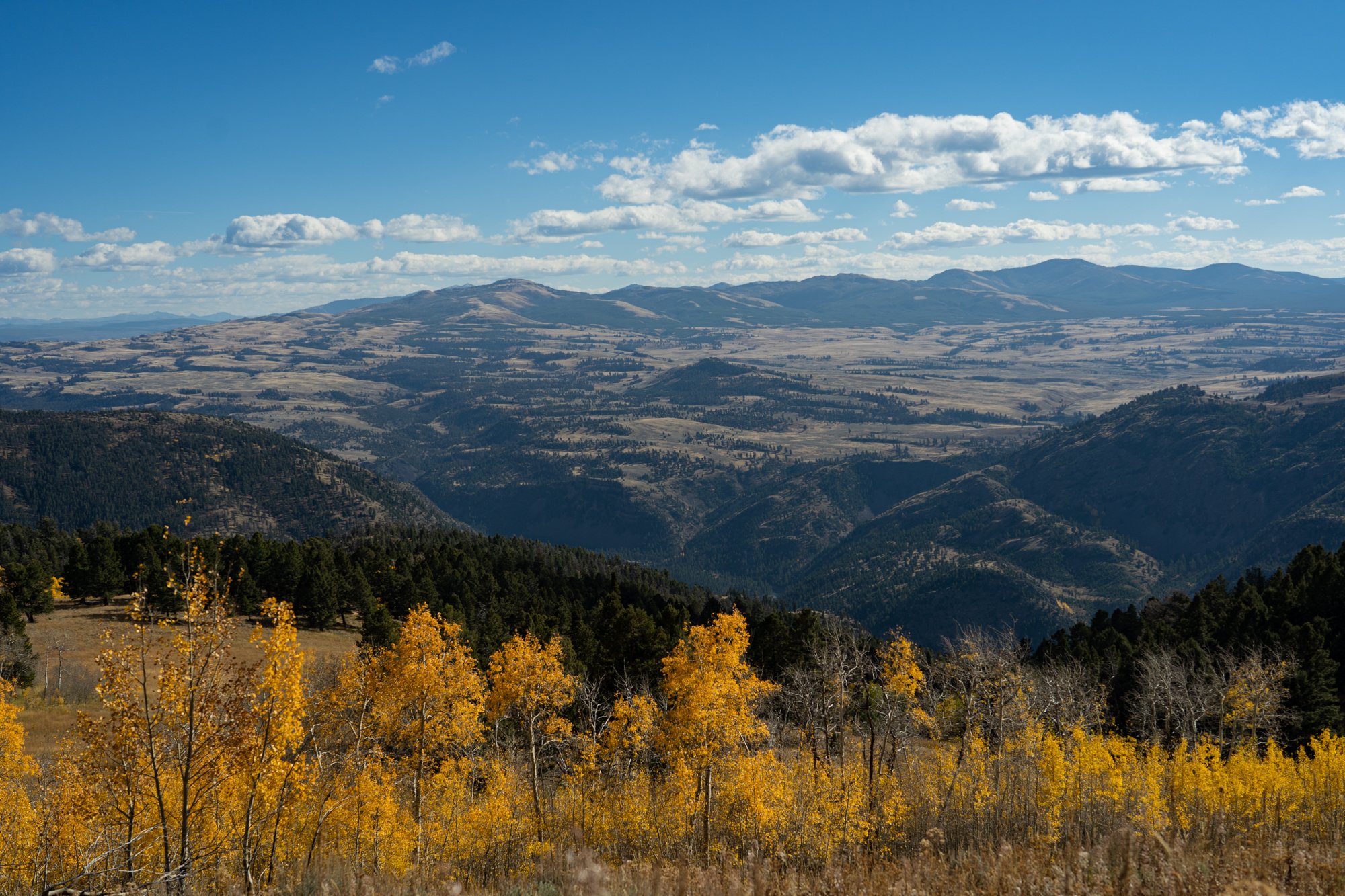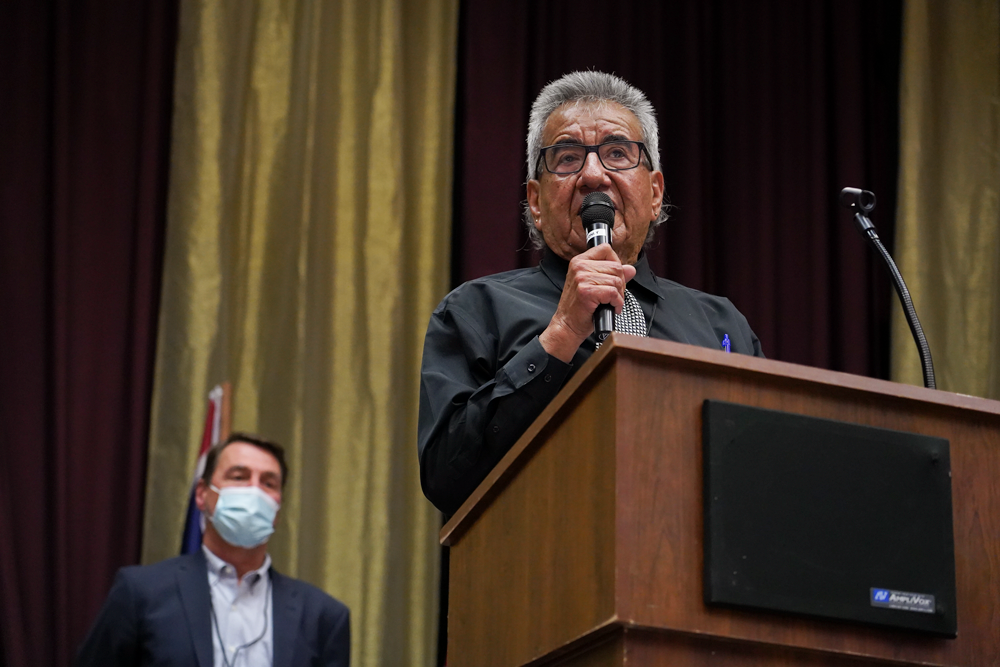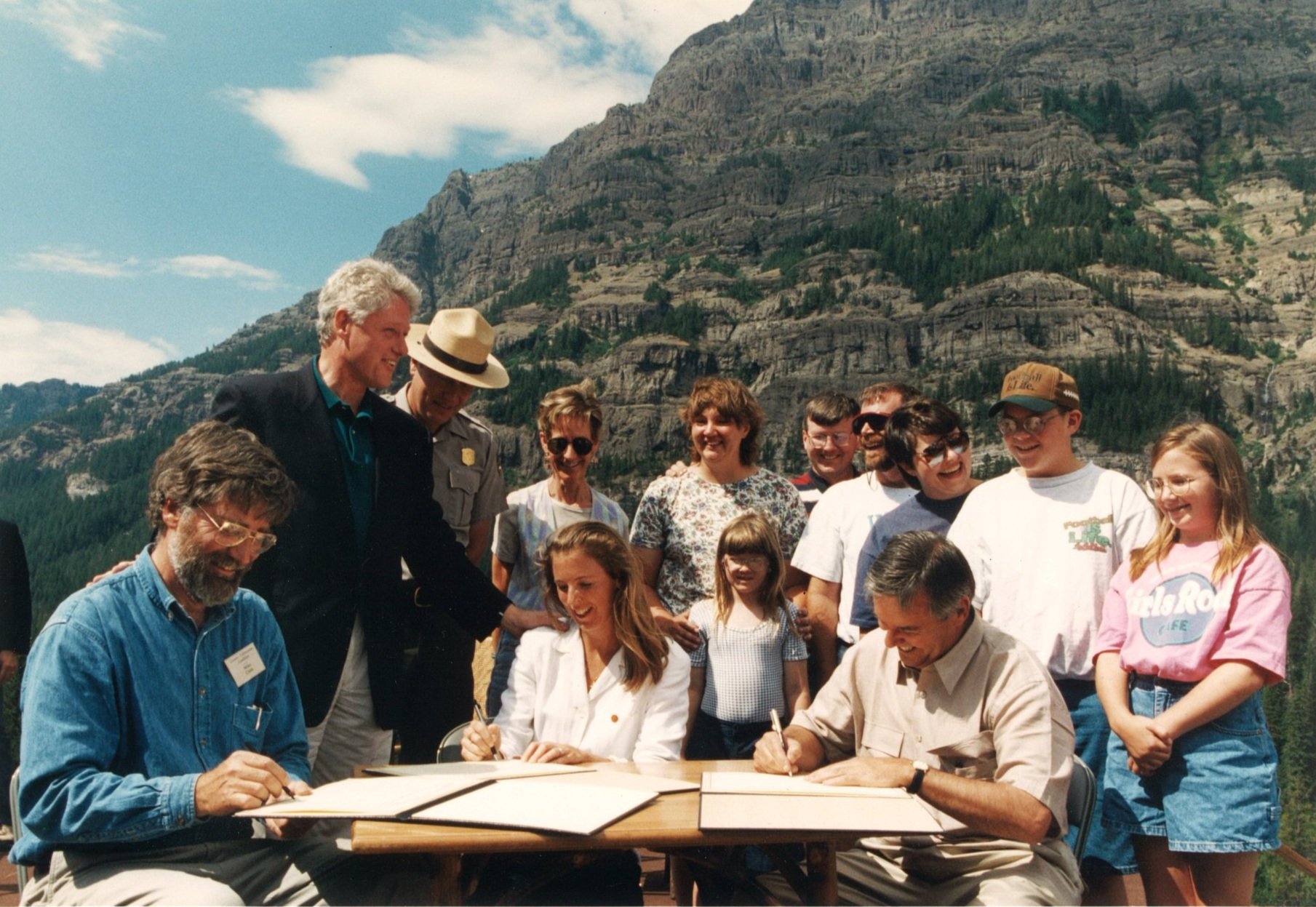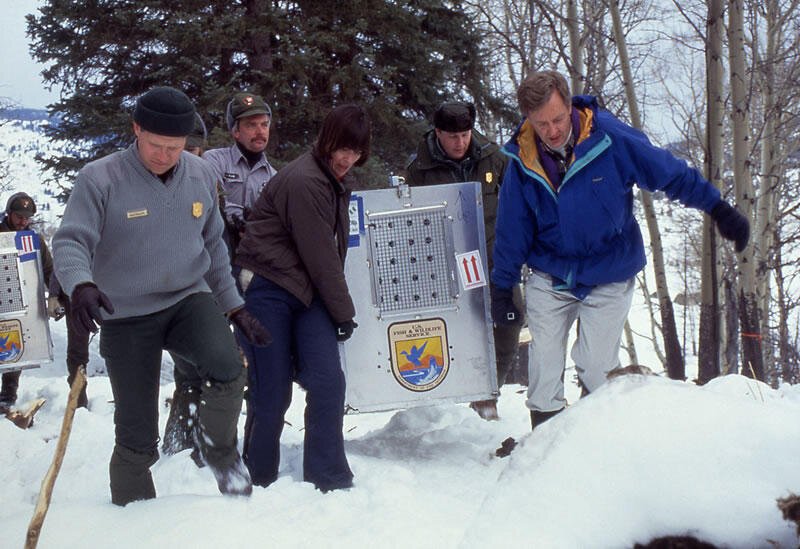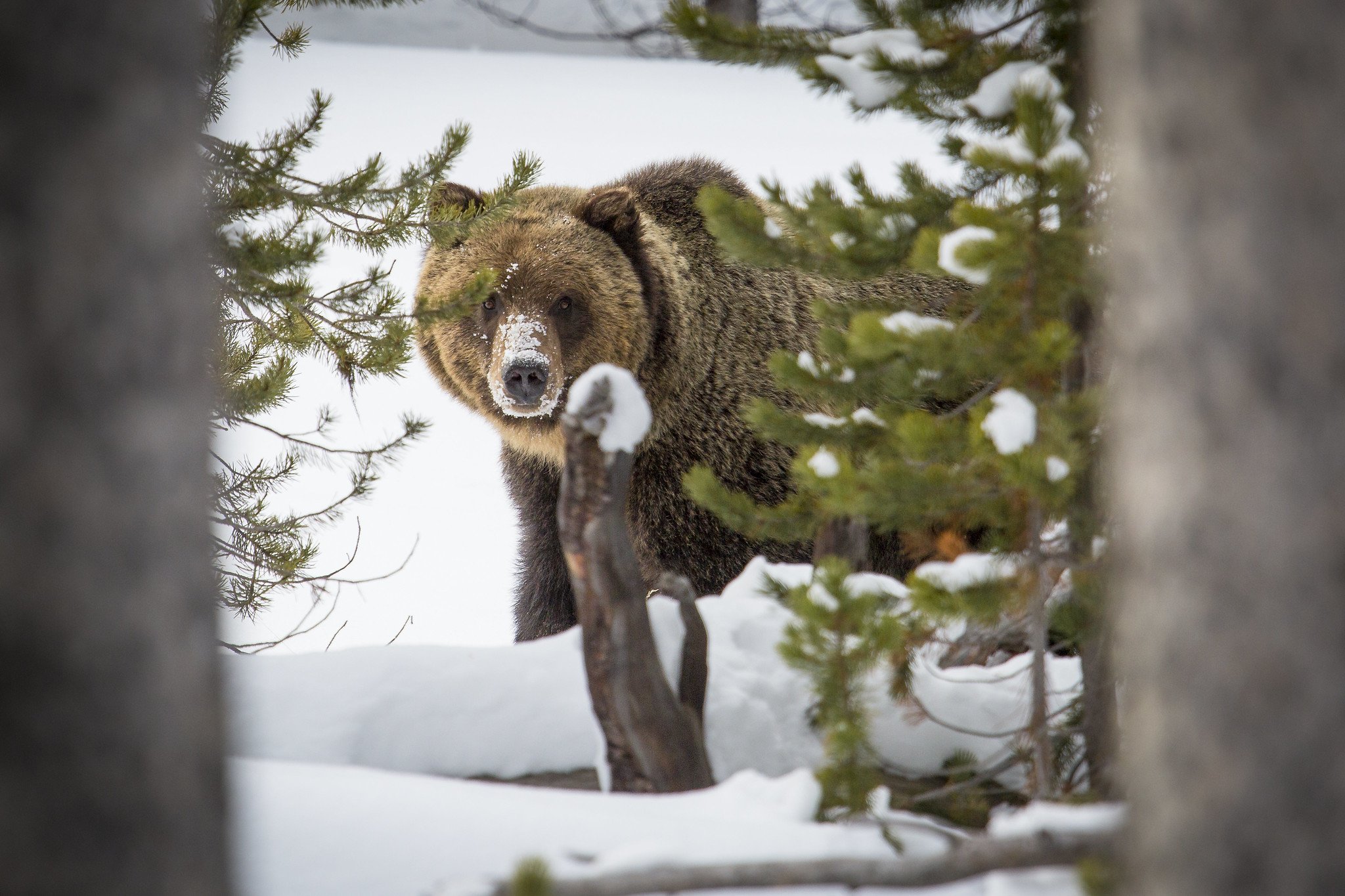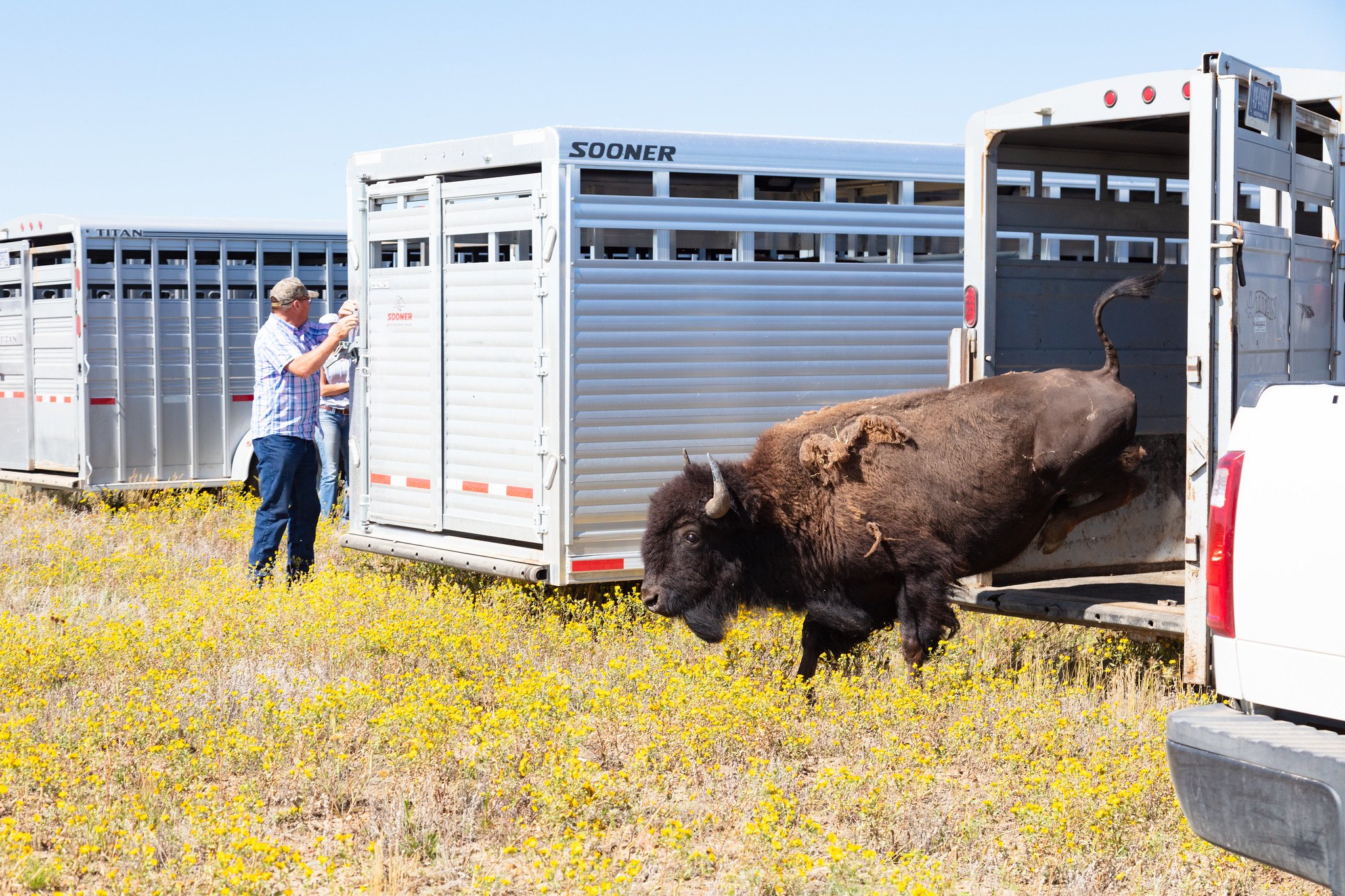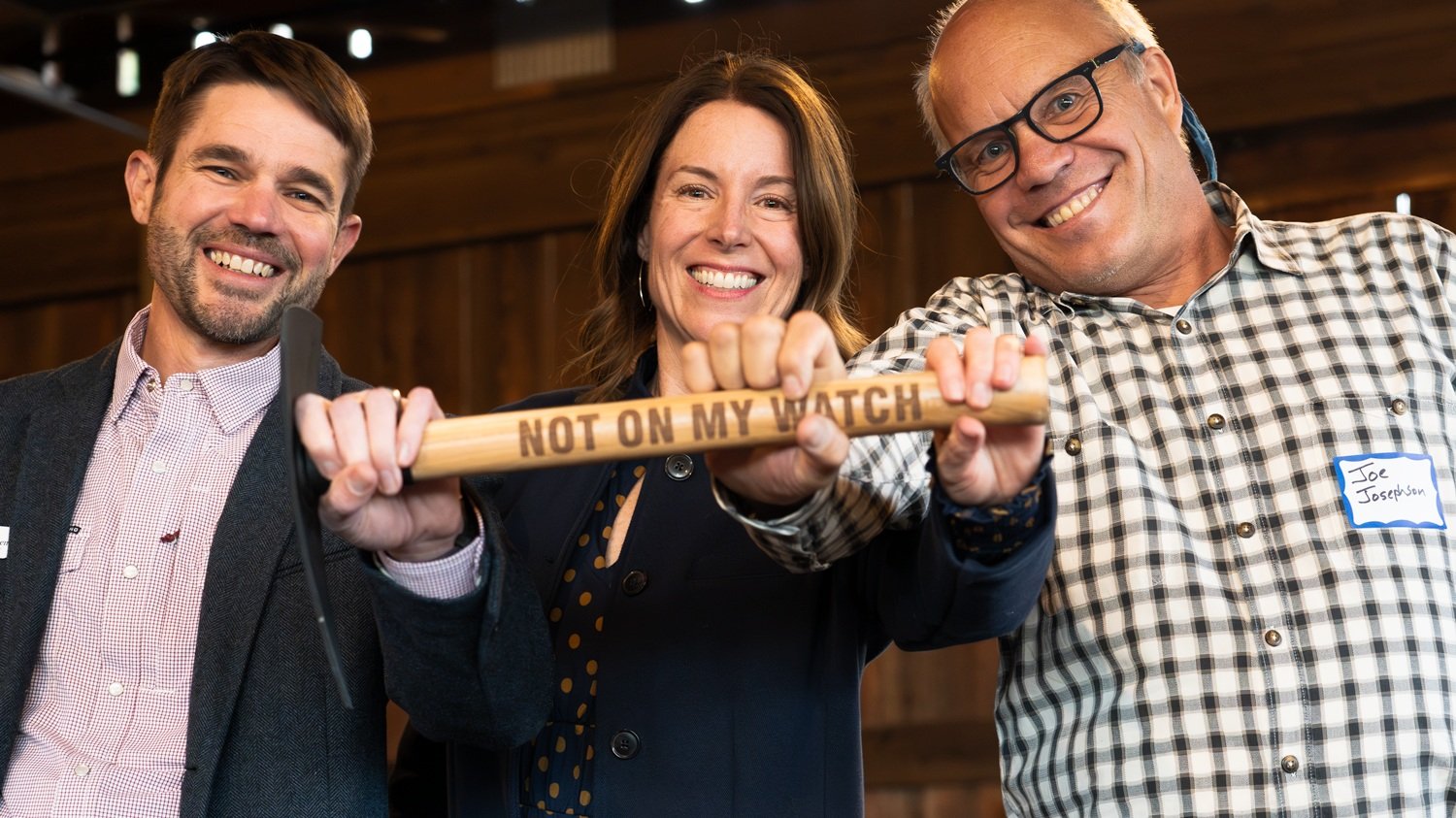
Our Conservation Wins
Leading the way in Greater Yellowstone conservation.
Since 1983, the Greater Yellowstone Coalition has been at the forefront of working with all people to protect the lands, waters, and wildlife of this incredible region. We envision a Greater Yellowstone where wild nature flourishes; plant, animal, and human communities thrive in reciprocity; and all people work together to conserve this globally significant ecosystem. For decades we’ve stopped disastrous mining endeavors, secured millions of acres of wildlife habitat, completed hundreds of wildlife conflict mitigation projects, collected thousands of public comments from advocates who love this place, and so much more.
In short, the Greater Yellowstone Ecosystem is remarkable, and it’s our job to keep it that way.
Our record speaks for itself. Check out some of our key wins over the years and learn more about why we’re one of the most effective conservation organizations working to protect Greater Yellowstone.
Stopped the gold mine on the border of Yellowstone National Park.
To remove the threat of a gold mine on the northern border of Yellowstone National Park, GYC entered into an agreement in the fall of 2023 to purchase the mineral rights, leases, and claims to 1,598 acres of land from Crevice Mining Group, LLC for $6.25 million. With the success of this campaign, we extinguished the last real and significant mining threat remaining on the border of Yellowstone, once and for all.
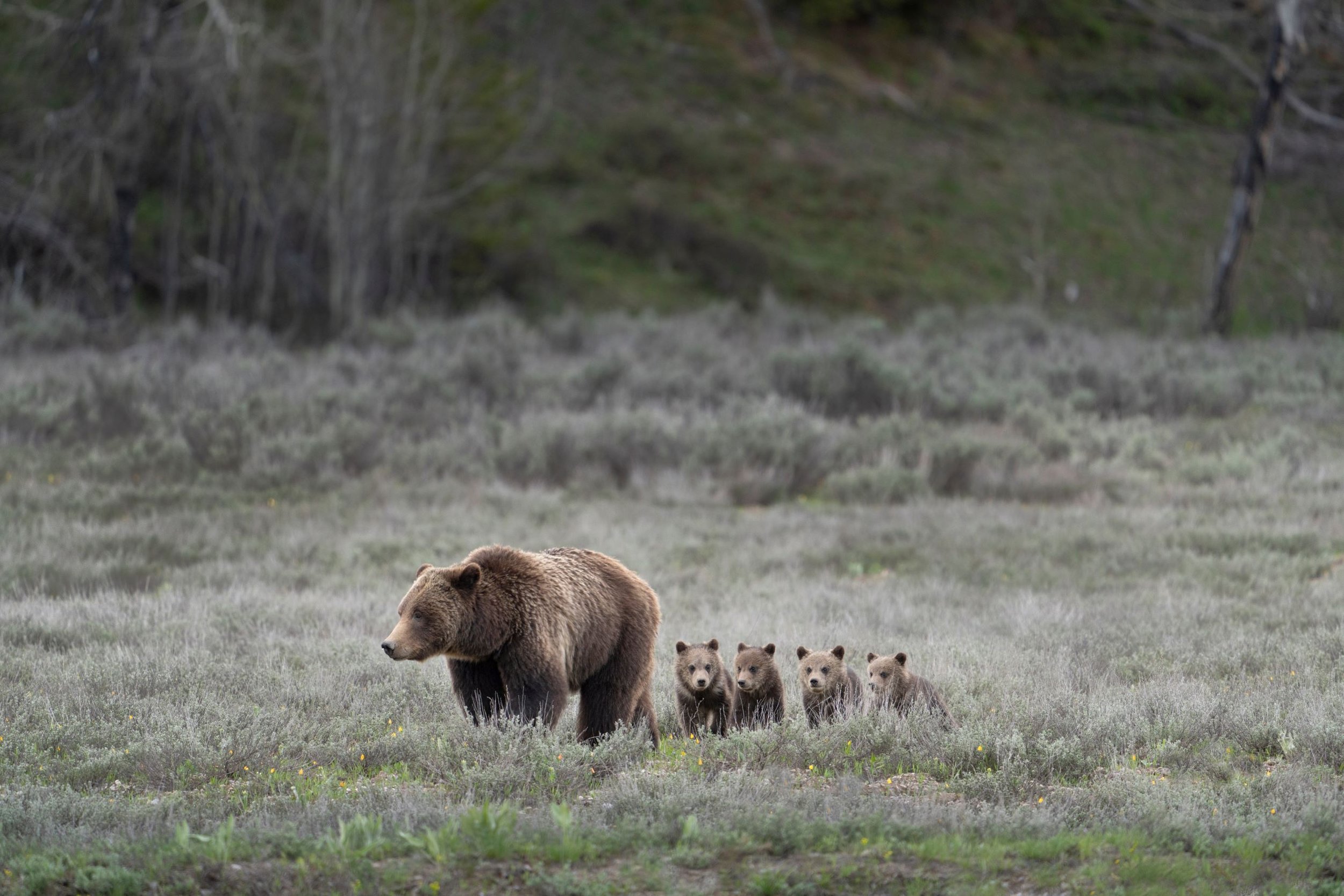
Helped Greater Yellowstone grizzly bears recover.
The Greater Yellowstone Coalition has been at the forefront of grizzly bear conservation since its inception. We’ve scored major victories in helping grizzlies recover from near extinction, including securing core habitat, extending protections under the Endangered Species Act, reducing conflicts with humans, increasing habitat connectivity to the north, fighting bad grizzly bear bills in the state legislature, and so much more.
Co-hosted Inter-Tribal Gatherings to enhance Tribal input into the management and conservation of national parks and public lands.
Close to 250 people gathered on the Wind River Indian Reservation in 2022 to commemorate the 150th anniversary of the creation of Yellowstone National Park. The gathering, hosted by the Eastern Shoshone and Northern Arapaho Tribes along with GYC and Yellowstone and Grand Teton national parks, created a space for Tribal leaders, Indigenous activists, federal agency personnel, and nonprofits to convene and discuss conservation issues in Greater Yellowstone and beyond.
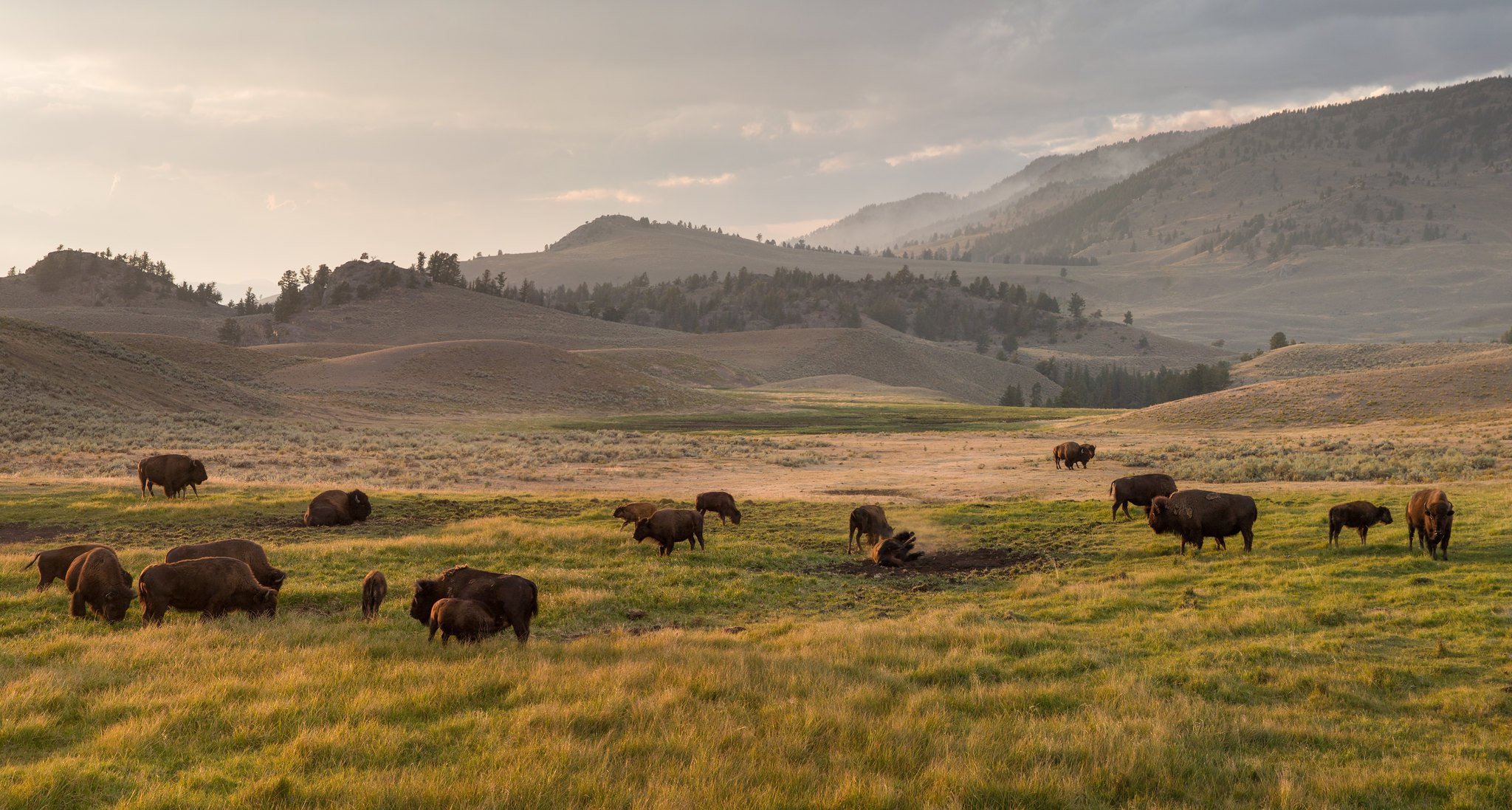
Gave bison room to roam outside Yellowstone National Park.
In 2015, former Montana governor Steve Bullock approved a plan to allow wild Yellowstone bison access to more than 250,000 acres of habitat outside of the park. This virtually eliminated hazing bison west of the park and was a huge step toward managing Yellowstone bison as valued, native wildlife in Montana. This comes on the shoulders of earlier efforts to secure 100,000+ acres in the Gardiner Basin for migrating bison.
Halted the New World Mine north of Yellowstone.
A Canadian company’s bid to mine gold near the northeast corner of Yellowstone National Park was rebuffed by tireless grassroots efforts led by the Greater Yellowstone Coalition. This 1996 victory spared rivers and streams, including the Wild & Scenic Clarks Fork of the Yellowstone and Soda Butte Creek, from toxic mine runoff.
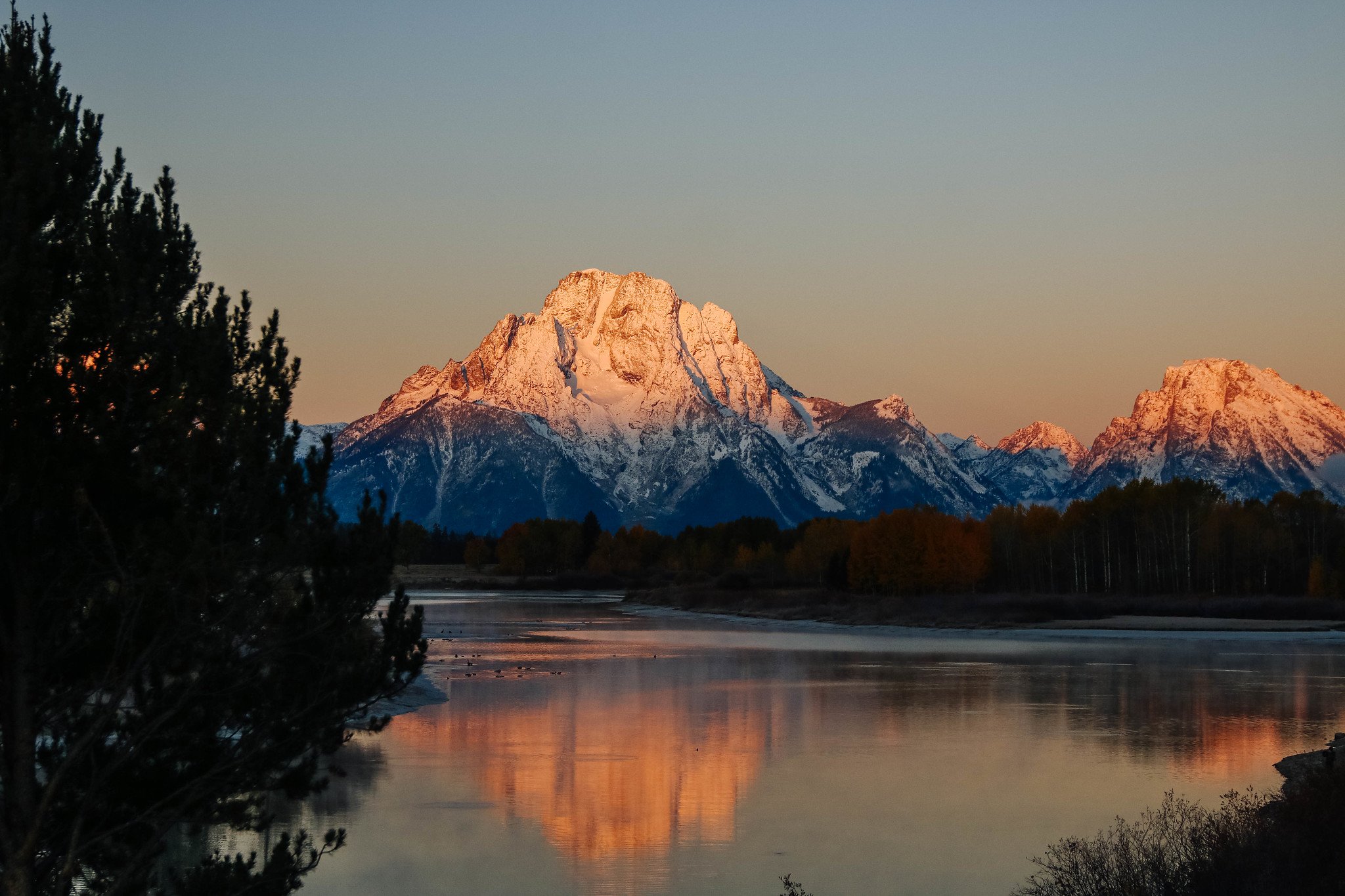
Protected the Snake River Watershed with the Craig Thomas Headwaters Legacy Act.
Wyoming’s Snake River was well on its way to ground-breaking federal protection after a Senate committee approved the GYC-fueled Craig Thomas Headwaters Legacy Act. Instead of simply protecting the Snake River, this legislation confers Wild & Scenic protection on the entire watershed—387 river miles and 13 streams. The law, passed in 2008, safeguards aquatic habitat and keeps the watershed in its free-flowing state.
Supported the Yellowstone wolf reintroduction.
Starting in 1995, with GYC’s support, gray wolves were reintroduced into the wilds of Yellowstone National Park. Today with more than 1,500 wolves roaming the Northern Rockies, and more than 450 in Greater Yellowstone, this is one of America’s greatest conservation success stories. Now, GYC maintains a vigilant watch over state agencies to ensure they keep wolf populations at healthy, sustainable levels.
Stopped a gold mine with the Yellowstone Gateway Protection Act.
When a gold mine threatened crucial wildlife habitat and Yellowstone River just north of Yellowstone National Park, GYC and our partners built grassroots opposition and engaged the Montana delegation to save this piece of paradise. In 2019, the passage of the Yellowstone Gateway Protection Act protected over 30,000 acres of public land from destructive gold mining.

Enhanced wildlife migration and movement with wildlife crossings.
The many miles of roads that bisect Greater Yellowstone inhibit wildlife habitat connectivity for elk, deer, pronghorn, and other species. For years, the Greater Yellowstone Coalition has secured funding to build wildlife crossing structures to allow unimpeded wildlife migration and movement. The Dry Piney wildlife crossings are slated to be completed in 2023 and the multiple underpasses on the intersection of Wyoming highways 22 and 390 are currently in construction.
Created vast, remote grizzly bear core habitat.
To ensure grizzly bears thrive long into the future, GYC has been dedicated to securing core habitat and enhancing connectivity. With the Forest Service, GYC committed funds and support to close illegal roads and restore roadbeds to a natural state, giving grizzly bears a remote habitat to move through. With a project completed in the Caribou-Targhee National Forest, the collaborative is now identifying next steps in other national forests bordering Yellowstone.
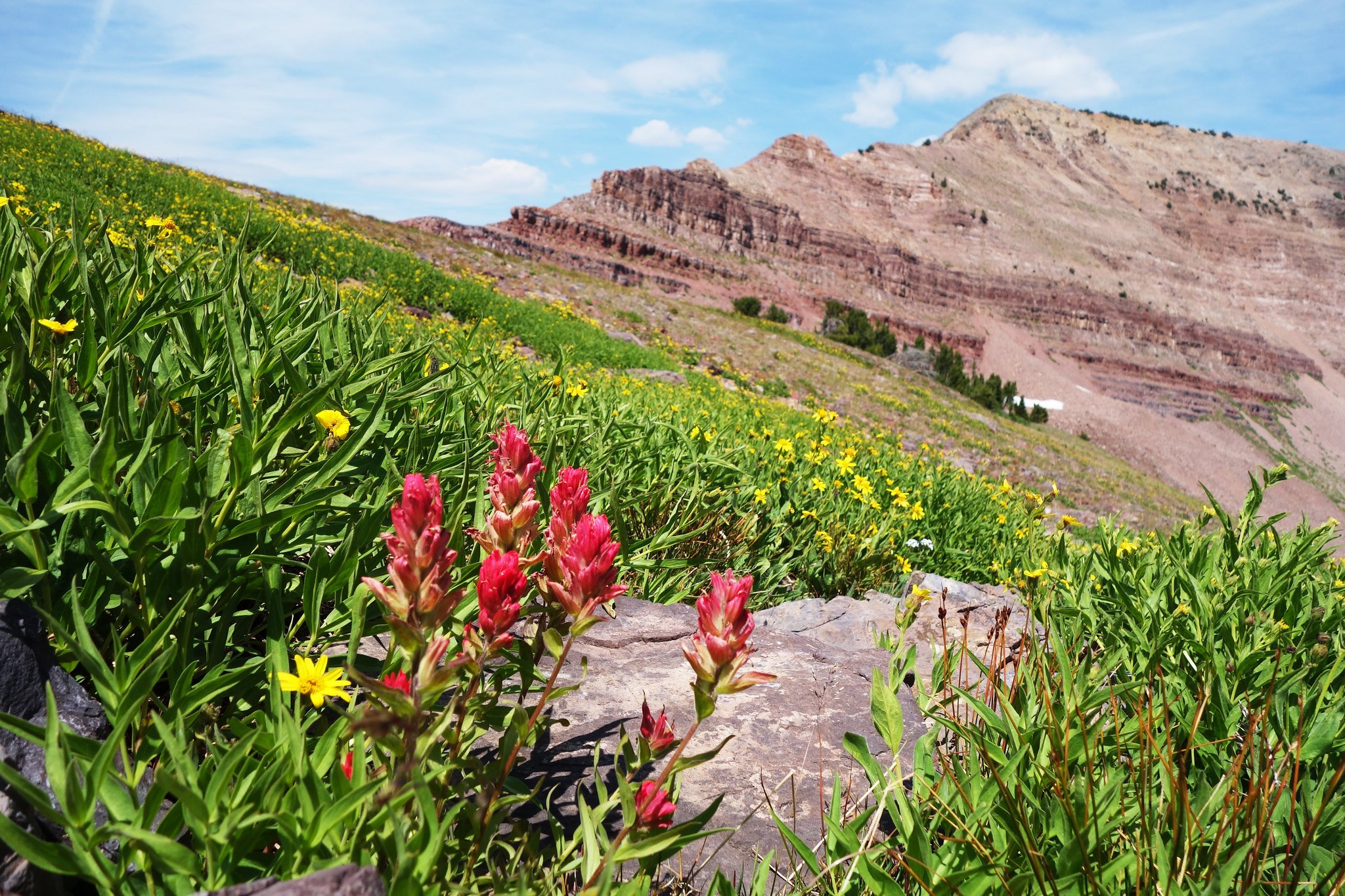
Helped ban oil and gas drilling in the Wyoming Range.
For years, many of Greater Yellowstone’s beautiful landscapes and important wildlife habitats were plagued by attempts at drilling for oil and gas. In 2008, GYC and our conservation partners took a giant leap toward success when a Senate committee supported permanent protections for 1.2 million acres of the Wyoming Range, located in the Bridger-Teton National Forest just south of Jackson, Wyoming.
Restored Yellowstone bison to Tribal lands.
To help bring bison home to lands outside Yellowstone, GYC focused on expanding the Yellowstone Bison Conservation Transfer Program. In 2021, our supporters raised $250,000 to build a larger quarantine facility and increase the number of Yellowstone bison able to complete the program. More bison are now being transferred to the Fort Peck bison facilities as their last stop before returning to Tribal and public lands across America.
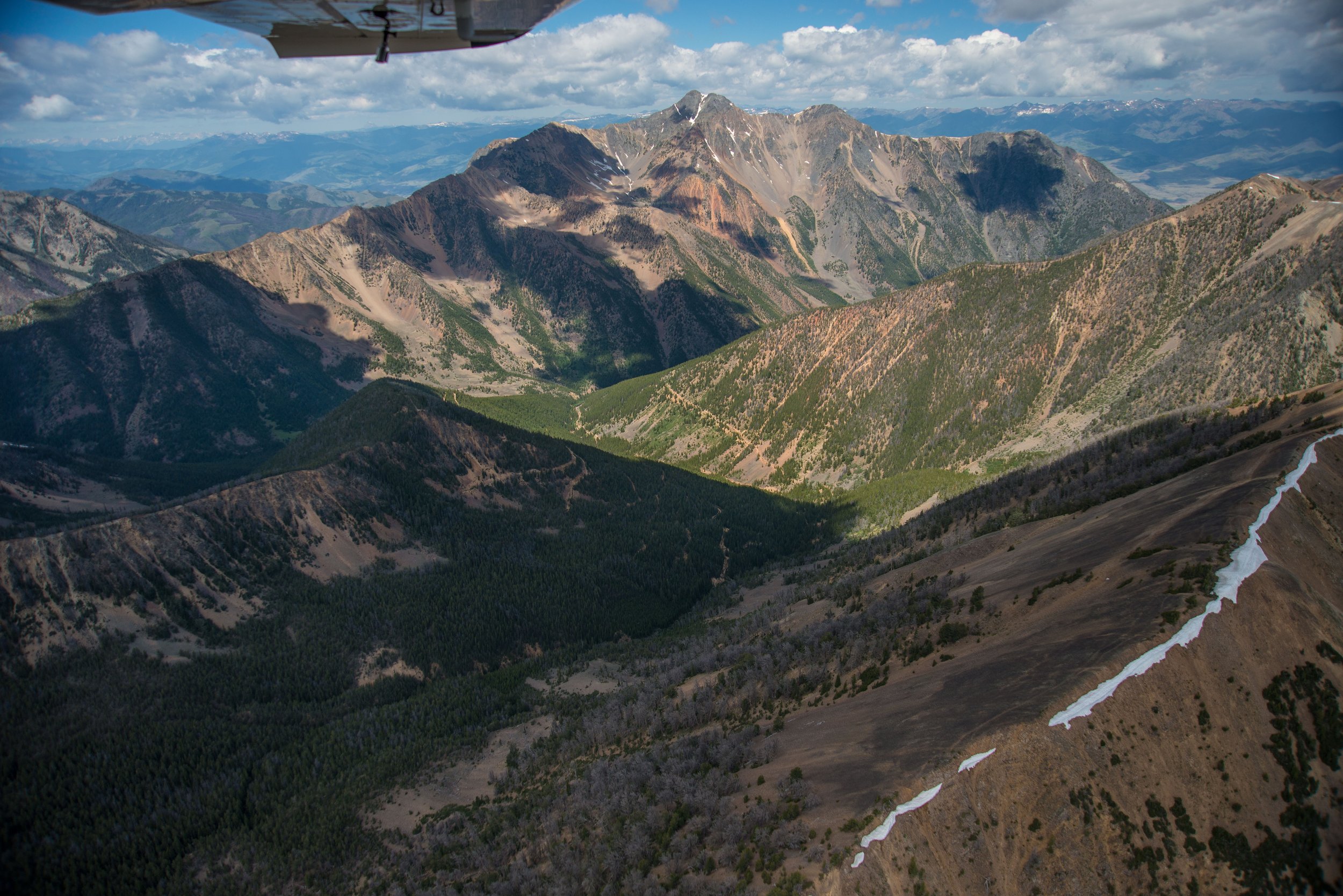
Turned a former planned mine into public land.
In 2022, a 75-acre parcel of land in Montana’s Paradise Valley—just north of Yellowstone—once slated to become a gold mine was sold to the Forest Service to turn into public land. Now a part of the Custer Gallatin National Forest, this steep, rugged landscape and its wildlife inhabitants, including grizzlies, Canada lynx, and wolverines, is forever safe from the threat of a disastrous gold mine and its toxic legacy.
Passed the East Rosebud Wild & Scenic River Act.
The Greater Yellowstone Coalition, with the Montanans for Healthy Rivers Coalition, built broad bipartisan support for the protection of 20 miles of beloved river north of Yellowstone National Park. In 2017, Montana’s entire delegation worked together to pass the East Rosebud Wild & Scenic Rivers Act, forever sparing East Rosebud Creek from development and dams and creating the first Wild & Scenic river in Montana in 40 years.
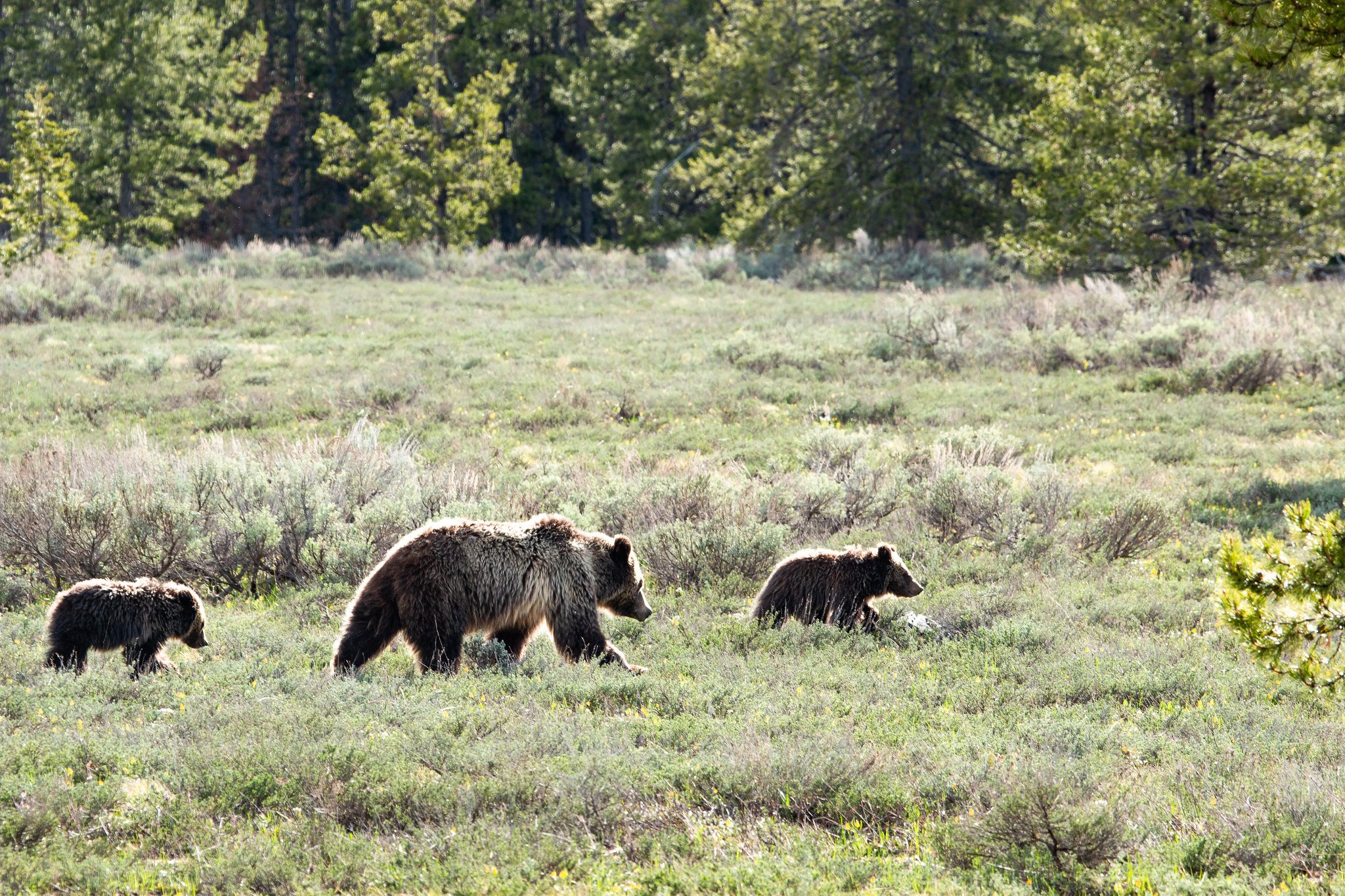
Saved wildlife habitat by retiring voluntary grazing allotments.
One effective way to mitigate conflicts between Greater Yellowstone wildlife and livestock is to compensate willing ranchers for their public-land grazing allotments. GYC and partners have participated in numerous grazing allotment buyouts over the decades, preserving over 1 million acres of crucial wildlife habitat for grizzly bears, wolves, and more.
Created innovative solutions for wildlife conservation.
The Greater Yellowstone Coalition is always working toward the next steps in meaningful wildlife conservation. These new win-win solutions, like elk occupancy agreements and brucellosis compensation funds, are needed to sustain this increasingly crowded and complex ecosystem.

Conserved America’s first national forest.
When the Shoshone National Forest needed a new management plan, GYC and its supporters advocated for keeping this incredible landscape healthy and wild. In 2015, after years of hard work, the new management plan ensured over 900,000 acres were off limits to oil and gas development and safeguarded crucial wildlife habitat and backcountry area from excessive motorized use.
Kept the Yellowstone River free-flowing.
The longest free-flowing river in the contiguous United States—the Yellowstone—is free of major dams and unnatural intrusions. When the Yellowstone River was threated by 14 bank stabilization projects, GYC took action. With a court victory, the Yellowstone remained free-flowing and the crucial riparian habitats and cottonwood forests were untouched.

